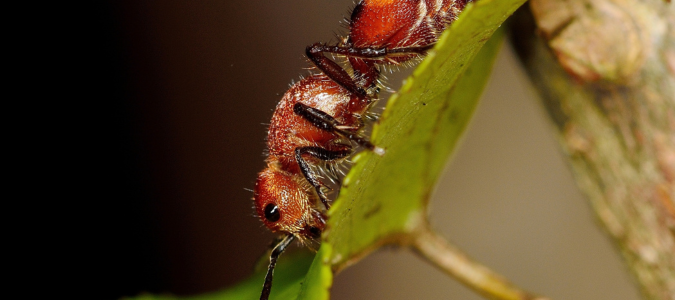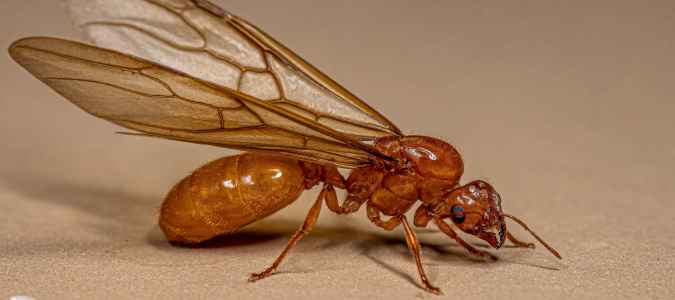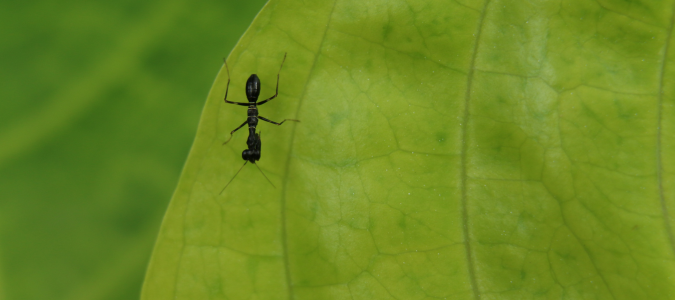Ants are persistent pests. When you think you’ve gotten rid of them, these resilient and hardworking insects can quickly return.
Tawny crazy ants are a common type of ant that homeowners can find in their homes. Their colonies have several queens and many more workers than other ants. As their name implies, tawny crazy ants are an aggressive bunch.
If these ants are already making themselves comfortable in your home, contact pest control specialists. They have the tools and expertise to take on tawny crazy ants and other ant species.
Tawny Crazy Ant Appearance and Behavior
Tawny crazy ants are native to South America but have been invading the U.S. since 2002. They started in Texas and have since spread to Mississippi, Florida, Georgia and Louisiana. They are so invasive that they have displaced the local fire ants in these areas.
While this species can’t fly, they infest old boxes, potted plants and other objects. Unknowingly, people were transporting these ants by bringing in items from other countries. Tawny crazy ants thrive in the U.S. thanks to a chemical they produce that is an antidote to fire ant venom.
Appearance
Tawny crazy ants are small to medium in size, with a reddish-brown or golden-brown hue. They have dense hairs all over their bodies, making them look smooth and shiny. When they eat, their abdomens will look striped as their membranes stretch.
The worker ants are around two millimeters long with long legs and antennae. Meanwhile, males are slightly bigger at two and a half millimeters. Queen ants stand out, measuring four millimeters or longer. They also tend to be darker than the rest of the colony.
Behavior
Tawny crazy ants get their name from their fast and sporadic movements. But that’s not the only strange thing about them. They have a penchant for chewing electrical wires, swarming them in great numbers and causing short circuits. Since their appearance in the U.S., they have destroyed sewage pumps and computers and triggered fire alarms.
Aside from electrical devices, they will smarm just about any opening and build their nests there. Unlike other ant species, tawny crazy ants don’t build centralized mounds, nests or beds. They can nest outdoors and indoors under or inside various objects, such as rocks, flower pots and pavement.
These omnivorous insects aren’t picky with food and will eat almost any organic material. Workers ants will stroke insects like aphids and mealy bugs with their antennae. This releases a sweet liquid called honeydew, which the ants eat and collect. They also enjoy over-ripe fruits and the sweet parts of plants. When tawny crazy ants find food, they leave a foraging trail so others in their colony can find their way to the source.
The best way to identify tawny crazy ants is by the density of their colonies. They love to socialize and live in big communities. Sometimes, they even build groups of colonies beside each other, displaying super colony behavior. They can cause damage to a home, given their large numbers.
If tawny crazy ants have taken over your space, let a pest control specialist handle the situation. It’s hard to win against pests as aggressive, resilient and resourceful as this ant species. But with professional help, you can have your home to yourself again.
Thanks to their resiliency, this type of crazy ant has displaced many fire ant colonies. However, fire ant colonies still bother many homeowners who want to enjoy their outdoor spaces.
Fire Ant Queen Appearance and Behavior
A fire ant colony begins when a queen abandons her multi-queen colony to start her own, taking some worker ants with her. Queens are extremely valuable to their colonies, and their workers and fighters will protect her at all costs. She’s the only reproductive female, so others rely on her to grow their population. She also releases pheromones that control her workers.
If you’re dealing with a fire ant infestation, it’s helpful to know what a fire ant queen looks like. Fire ant queens are significantly larger than others in their colony because they get first dibs on the food. They stand out from the worker ants with their large head and thorax. You’ll usually find the queen surrounded by workers as they tend to her and her eggs.
Unfortunately for homeowners, identifying the queen is only half of the battle. Fire ants protect their queen fiercely, stinging and injecting venom into anyone who tries to harm her. It’s an unpleasant experience for humans. Only tawny crazy ants are immune to fire ants’ stings. They secrete formic acid that covers their bodies, neutralizing the enemy’s venom.
In addition, there can be multiple queens in one fire ant colony. They can have double the number of ants thanks to their extra queens. Even if you get rid of one queen, there will be others to lay eggs and keep the colony going. Their population will keep growing, and new mounds will keep popping up on your property. Fire ant queens can live as long as seven years, giving them lots of time to reproduce.
While it can be tempting, don’t try to solve the problem yourself. It’s best to let pest control specialists handle the situation. The pros know how to control the mounds on your property and keep these pesky pests from returning.
Another type of ant that can be found in Texas is the longhorn crazy ant.
Longhorn Crazy Ant Appearance and Behavior
Longhorn crazy ants have many similarities to tawny crazy ants but have distinct traits, too.
Appearance
They have long and slim bodies, measuring between two and three millimeters. Their legs and antennae are long, and their bodies sport a dark brown or black hue with a gray tint. Longhorn crazy ant queens are typically larger than the worker ants, measuring between four to six millimeters in length. They will often appear slightly darker or more red than the workers.
Instead of traveling in a straight line, their workers make jerky and random movements when searching for food, explaining the “crazy” label.
Behavior
These omnivorous and opportunistic scavengers will feed on anything, including honeydew, seeds, fruits and dead or live insects. They are unafraid to wander away from their nest and break into homes to find food and water. You’re likely to see them inside during colder months when there are limited food sources outside.
One reason that longhorn crazy ants are so pervasive is their cloning abilities. The queen produces daughters who are genetic clones of herself and sons who are genetic clones of her mate. This double-cloning method means there are several queens in one colony, sometimes as many as 40. That usually causes colonies to break into smaller groups and scatter to other areas.
Outside, they like to build their nests in moist areas. You’ll often find them under fallen trees, stones and debris. But they also do fine indoors, nesting underneath floors and in empty spaces behind walls. Their ability to thrive in and out of the house makes it hard for homeowners to find their nests.
When one longhorn crazy ant finds its way into an electronic device and gets electrocuted, it will release a specific pheromone. This scent prompts the other ants in its colony to find the “attacker.” They’ll experience the same death and keep the cycle going. Soon, there will be a swarm of longhorn crazy ants piling up inside the device, causing the system to short-circuit. That could mean expensive repairs for homeowners.
One way to deter these pests is to seal off all possible entry points around your house. They can use even the tiniest cracks and openings to invade your space. Also, clean up crumbs and spills immediately to avoid attracting them. If they’re already wreaking havoc on your property, pest control specialists can help. They have the tools and expertise to restore peace in your home and will know how to prevent ants in the future.
Let the Pros Handle the Ant Infestation in Your Home
The fastest and most effective way to control these annoying pests is to call in pest control professionals. Although ants are resourceful and hardworking, pest control specialists have the upper hand to help with ant control. They can also help with controlling ants in your lawn.
ABC Can Control and Prevent Ants
Dealing with an ant problem can be extremely frustrating. Instead of trying to prevent or control ants on your own, contact ABC Home & Commercial Services. Our highly trained pest control professionals will create a custom treatment plan, so you don’t have to worry about any type of ants, including fire ants.



